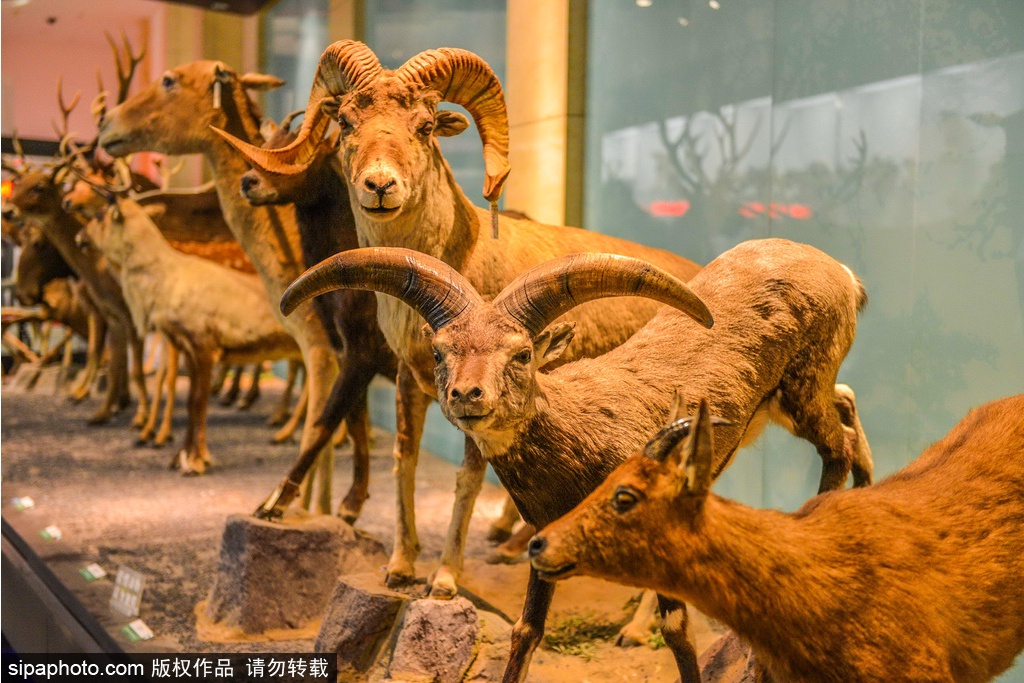National Zoological Museum of China is a world-recognized phylogenetic classification and research center of animals. As the largest museum in Asia, it specializes in the most cutting-edge researches and thus is considered a frontrunner in all aspects. The museum draws on experience of thematic exhibition from other modern museums, incorporates natural science and human science as well as other subjects. In addition, the museum has set up a 4D dynamic theater and other high-tech audio-visual facilities, to make esoteric scientific knowledge accessible to all tourists. This museum was opened to the public in 2009 and has hosted a wildlife photography exhibition, which was themed birds, insects and African wildlife and well-received by local shutterbugs.

The museum covers a total area of 7,300sqm and resembles the French National Museum of Natural History in architectural pattern. Notably, the museum has three floors with an area up to 5,500sqm. In the museum, nine fixed showrooms and one mobile hall are set up together with one 4D cinema.

Situated on a separated specimen exhibition floor, the exhibition pavilion of animal specimens comprises fish, amphibian, invertebrate, mammal, bird, insect and digital specimen halls. The exhibition pavilion boasts over 5.3 million animal specimens of all kinds, accounting for about one third of the total exhibits collected by the Chinese Academy of Sciences. The exhibition pavilion features advanced movable racks made of high-strength steel installed for preserving specimens, with space able to accommodating an increasing number of visitors in the coming decades. The pavilion almost embraces specimens of all major animal groups in China and other representative species collected from other domestic regions including Taiwan and more than 20 countries, and those donated by or traded with other countries.

Nine showrooms of this museum respectively are:
(I) Insect Exhibition Pavilion, Insect Hall and Butterfly Hall;
(II) Invertebrate Exhibition Pavilion and Invertebrate Hall;
(III) Fish and Amphibian Exhibition Pavilion;
(IV) Animal and Hominid Hall, Bird Exhibition Pavilion;
(V) Bird Hall;
(VI) Mammal Exhibition Pavilion;
(VII) Endangered Animals Hall;
(VIII) Digital Specimen Exhibition Pavilion;
(IX) Animal Diversity and Evolution Hall.
The museum displays over 5,000 specimens of endangered animals. By presenting scientific knowledge shows, taxidermy and view window display, zoological knowledge is perfectly interspersed into the whole display process by means of sound, lighting, ultraviolet light, electricity, multimedia, animal specimen, picture and text, reproduction of ecological environment and screen.
Ticket Information
Ticket: 40 yuan
Through Ticket (4D cinema included): 60 yuan
Opening Hours: 9:00-17:00, Tuesday - Sunday (May 1 - August 31)
9:00-16:00 (September 1 - April 30), closed on every Monday
Ticketing Time: 9:00-15:30
Traffic Guide:
Bus Route:
Take Bus 81, 484, 510, 518, 594, 630, 695, 751, 607, 617, 913, Yuntong 110 to the Station of Institute of Geographic Sciences and Natural Resources Research, CAS or Nangounihe Station.
Subway Route:
(1) Take Subway Line 5 to Datunlu East Station, walk northward about 200m from the northwest entrance to transfer Bus 484, 617 (former Bus 836), 695, 751, 913, 594, get off at the Station of Institute of Geographic Sciences and Natural Resources Research, CAS or Nangounihe Station after four stops;
(2) Take Subway Line 8 to Olympic Green, walk westward about 500m from the northwest entrance to the north side of the street; [1]
(3) Take Subway Line 15 to Olympic Green, walk westward about 500m from the northwest entrance to the north side of the street; or take Subway Line 15 to Beishatan Station, walk eastward about 1,300m from the northeast entrance to the north side of the street.



